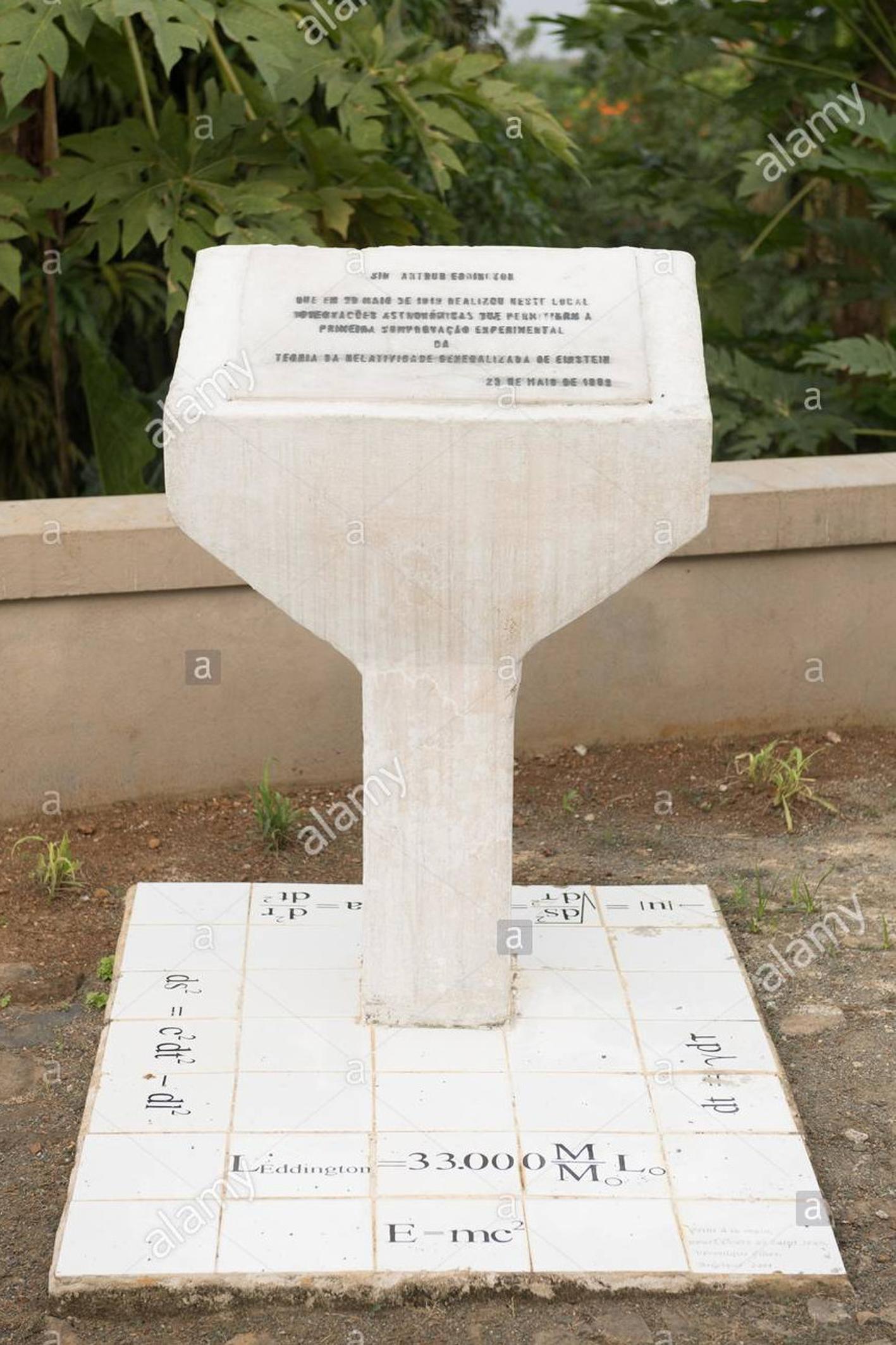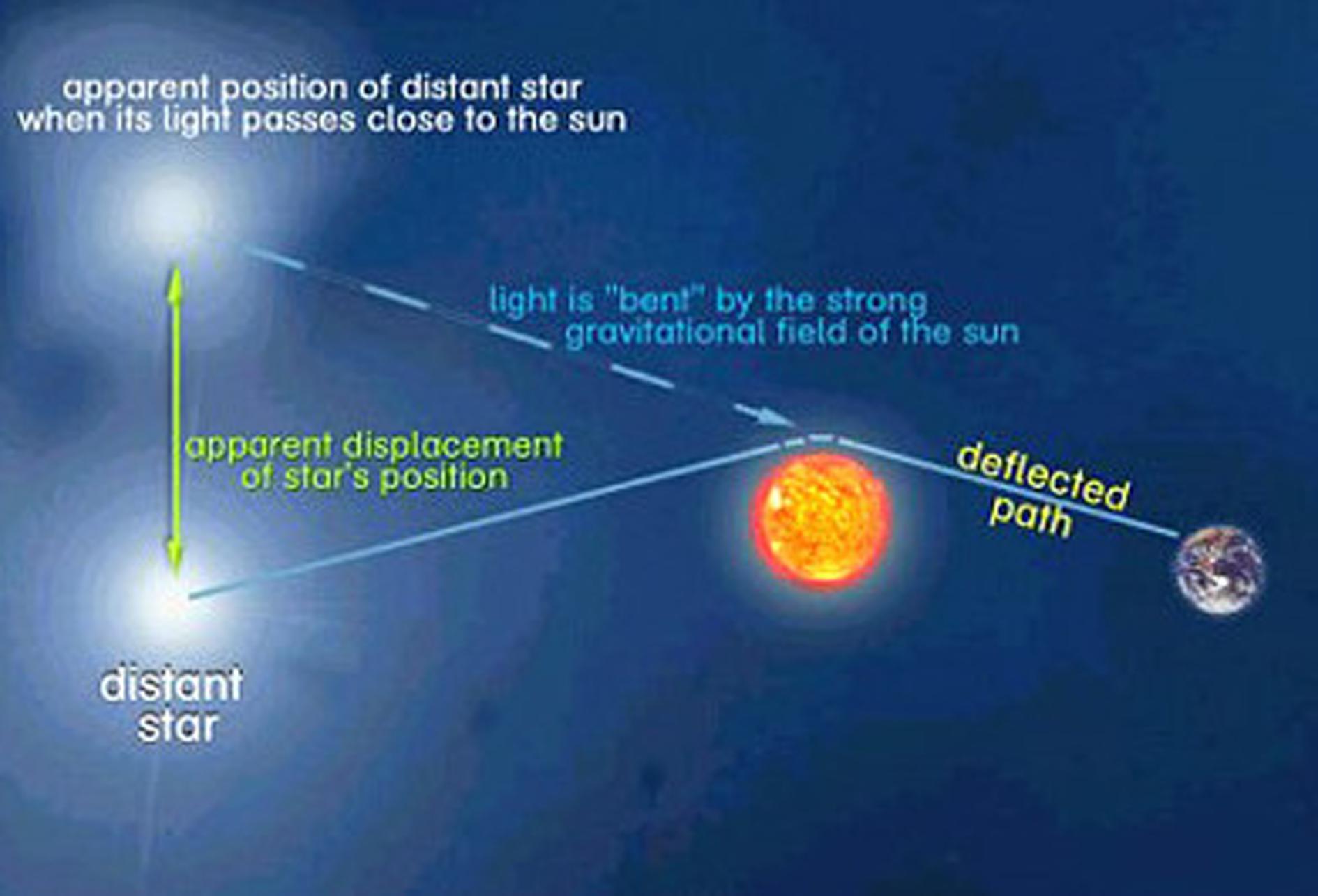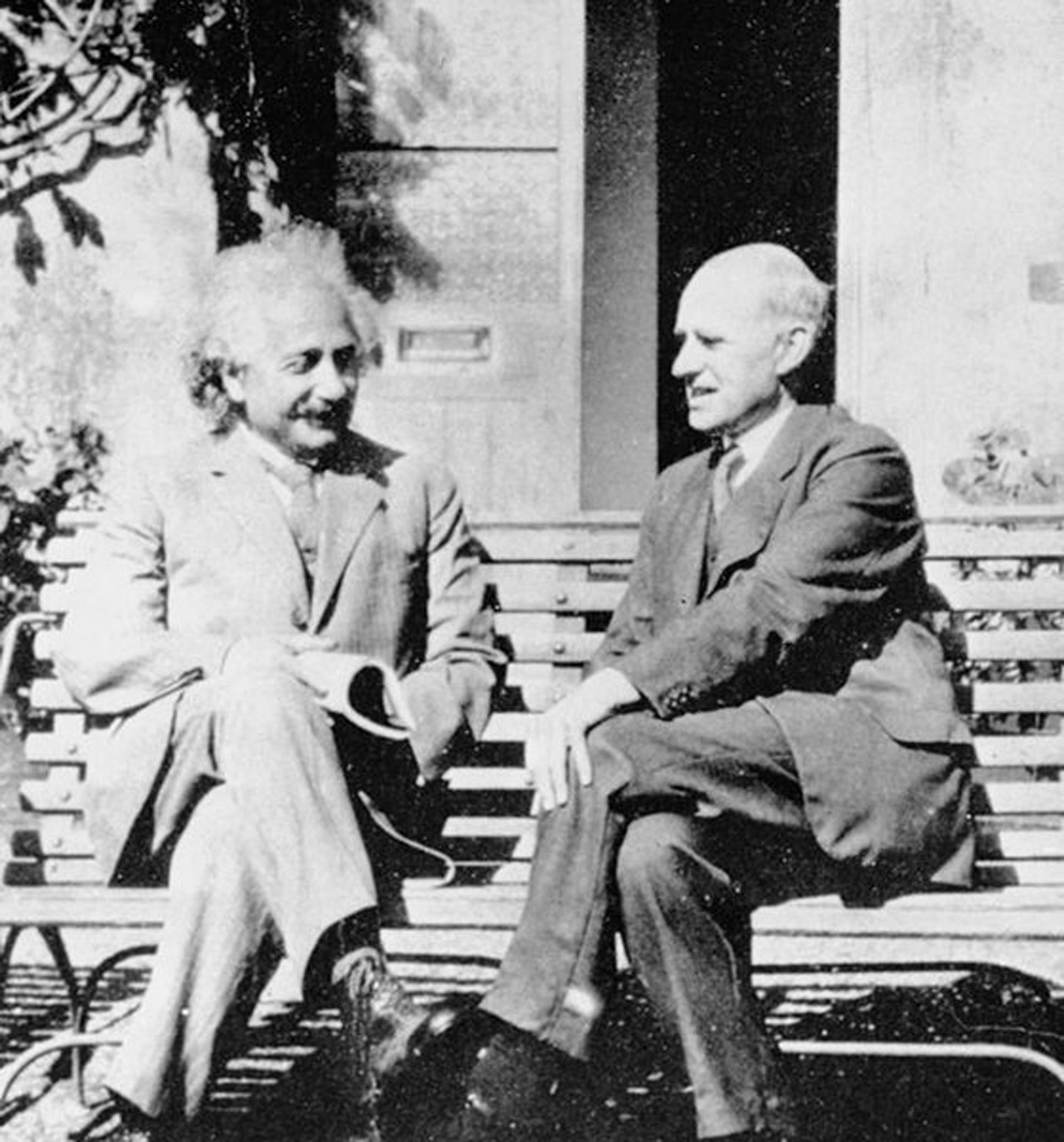Figure 1
Einstein in Berlin around 1919.
Figure 2
Dyson around 1910.
Figure 3
Left: Crommelin around 1919. Right: Davidson around 1919.
Figure 4
Eddington around 1915.
Figure 5
Cottingham, second from the left, in his watchmaker shop, around 1910.
Figure 7
Spacetime distortion by the Sun here represented as space distortion alone. The movement of massive particles and massless particles such as light is described as geodesic motion in spacetime.
Figure 9
Lunar orbit showing the nodes when the orbit crosses the ecliptic, the Sun's path on the celestial sphere along the year.
Figure 10
The July 11, 1991, shadow of the Moon from Playas del Coco, Costa Rica. This eclipse also passed some hours later in Amazonia.
Figure 11
Left: Map of South America, with Brazil and the city of Fortaleza visible in the north. Right: Map of Ceará, where one can spot Sobral, Fortaleza, and Camocim, the nearest port to Sobral.
Figure 12
Left: Sobral in 1919 with the main church of Nossa Senhora da Conceição seen from the church of Patrocínio with a zoom. The Jockey Club where the English and American tents were mounted is just beyond the right boundary of the photograph. Courtesy of Carnegie Institute. Right: Sobral city today with the main church of Nossa Senhora da Conceição seen from near the river Acaraú, with the river itself on the picture. The old race horse track of the Jockey Club started from the riverbank at the constructed circular bay seen in the figure and ran perpendicular to the river.
Figure 13
Observatory camp of the Brazilian expedition with the church of Patrocinio in 1919. Courtesy of Observatorio Nacional, Rio de Janeiro.
Figure 14
Museum of the Eclipse, the planetarium, and church of Patrocinio today. The monument in between the two half moons of the museum was built in 1923 to celebrate the 150 years of the establishment of Sobral.
Figure 15
Einstein in Sobral: Einstein's statue inaugurated in 2019 for the one hundred years of the eclipse.
Figure 16
Come and see São Tomé e Príncipe.
Figure 17
Left: The location of Principe in the Guinea Golf off the western equatorial coast of Africa. Right: A close up.
Figure 18
Map of Principe showing the location of Santo Antonio and of Roça Sundy.
Figure 19
Santo Antonio bay.
Figure 20
Left: Roça Sundy house then. Right: Roça Sundy house now.
Figure 21
A stone of 1989 in Roça Sundy celebrating Eddington's confirmation of general relativity.
Figure 22
A plate in Roça Sundy containing useful historical and scientific information about the findings of the 1919 eclipse.
Figure 23
A drawing showing the light deflection phenomenon. Courtesy of Light Website.
Figure 24
No mass no light deflection.
Figure 25
When there is an object of mass M like the Sun there is light deflection. Light rays come from a star at infinity. If there is no mass M they continue their travel in straight lines. Since the star is at infinity all these light rays are parallel and hit the line Sun-Earth at an angle , in particular one of them hits the observer at that angle. In the presence of a mass M these light rays get deflected and one of them hits the observer at an angle . The incoming light ray is thus deflected by an amount . Therefore the star has its position in the sky shifted by .
Figure 26
Left: Field of four stars. Right: The Sun is eclipsed by the Moon and the field of four stars pops out in accord with the law for gravitational light deflection.
Figure 27
Left: The Hyades open cluster in the Constellation of Taurus. Right: The Hyades in plenitude.
Figure 28
World map with the track of the May 29, 1919, eclipse. The black belt 200Km wide yields the places of total eclipse. The gray belt is for partial eclipse.
Figure 29
The three eclipse teams, Brazilian, British, and American, at Igreja do Patrocinio, Sobral. From left to right: Luiz Rodrigues, Theophilo Lee, Daniel Wise from Carnegie, Henrique Morize, Charles Davidson, Andrew Crommelin, Allyrio de Mattos, Andrew Thomson from Carnegie, Domingos da Costa, Lélio Gama, Antônio Lima, and Primo Flores. Courtesy from Observatorio Nacional, Rio de Janeiro.
Figure 30
The Jockey race course in Sobral with the tents and the instruments of the Carnegie team and the British tent. The British tent is closed and can be seen as a small square on the left corner. The Saboya house where the British and Americans stayed is the pleasant nice looking spacious loft house on the middle left. Courtesy of the Carnegie Institute.
Figure 31
Left: The British tent closed. The Saboya house is in the background. Compare with the previous photograph. Right: The British tent opened with the two telescopes used by Crommelin and Davidson, the 4 inch telescope on the right and the 13 inch astrographic telescope on the left, together with the respective ceolostats. The telescopes are pointing eastward as the eclipse was to be at 9:00am. Courtesy of the Royal Greenwich Observatory.
Figure 32
A view from the top of the Earth, Moon, Sun system yielding an eclipse at 9:00am local time in Sobral.
Figure 33
A view from the top of the Earth, Moon, Sun system yielding an eclipse at 2:00pm local time in Principe.
Figure 34
Photograph of the field of stars in the 1919 eclipse by the 4 inch telescope in Sobral. Courtesy of The Royal Greenwich Observatory.
Figure 35
Photograph of the field of stars in the 1919 eclipse in Principe. Some stars are marked.
Figure 36
The position (x,y) of the star and its measured shifted position .
Figure 37
Lorentz telegram to Einstein in September 22, 1919, stating “Eddington found stellar shift at solar limb, tentative value between nine-tenths of a second and twice that.”
Figure 38
Einstein and Eddington in front of the main building of the Observatories, in Madingley Road, Cambridge, in June 1930.
Figure 39
Wonderful light deflection. A blue galaxy appearing several times along a ring is being lensed by a cluster of galaxies. Courtesy of the Hubble Space Telescope - NASA.







































